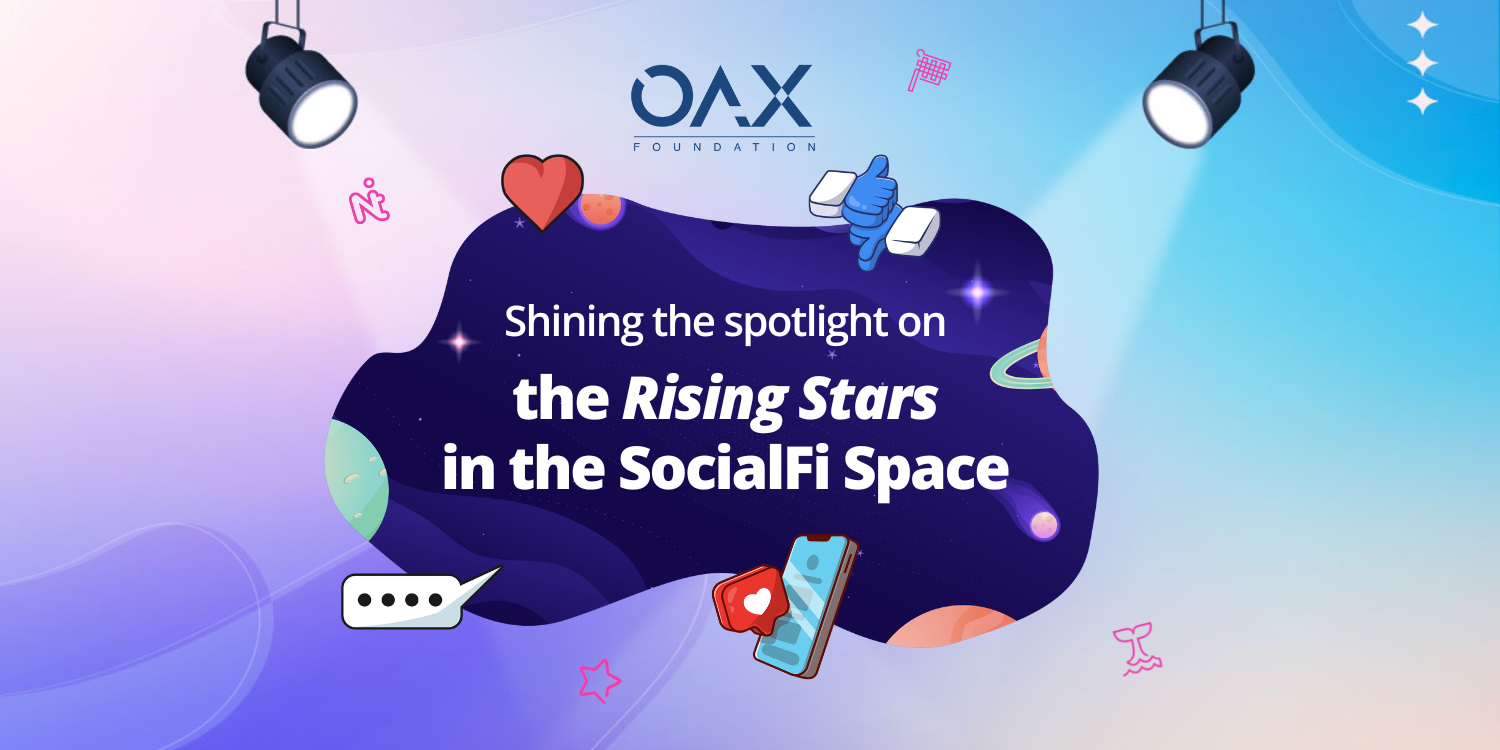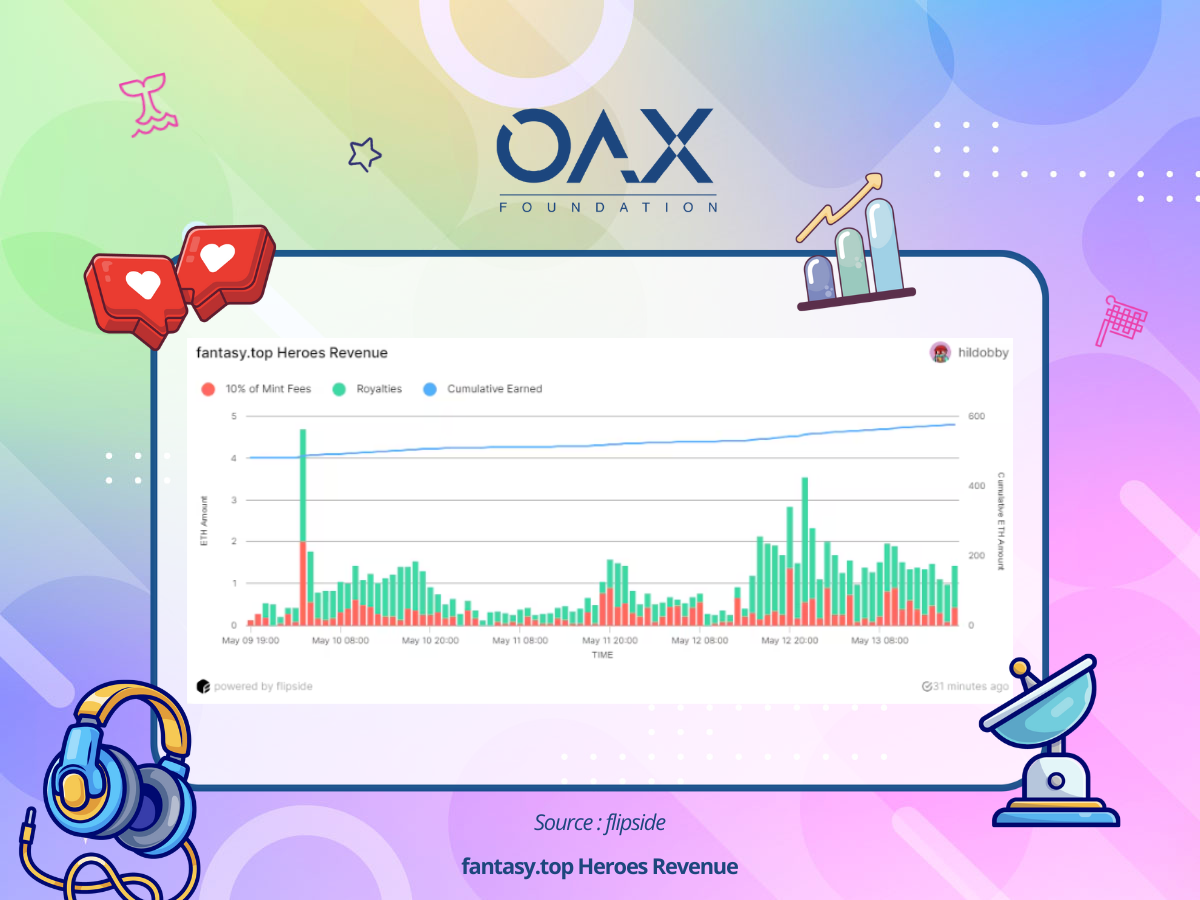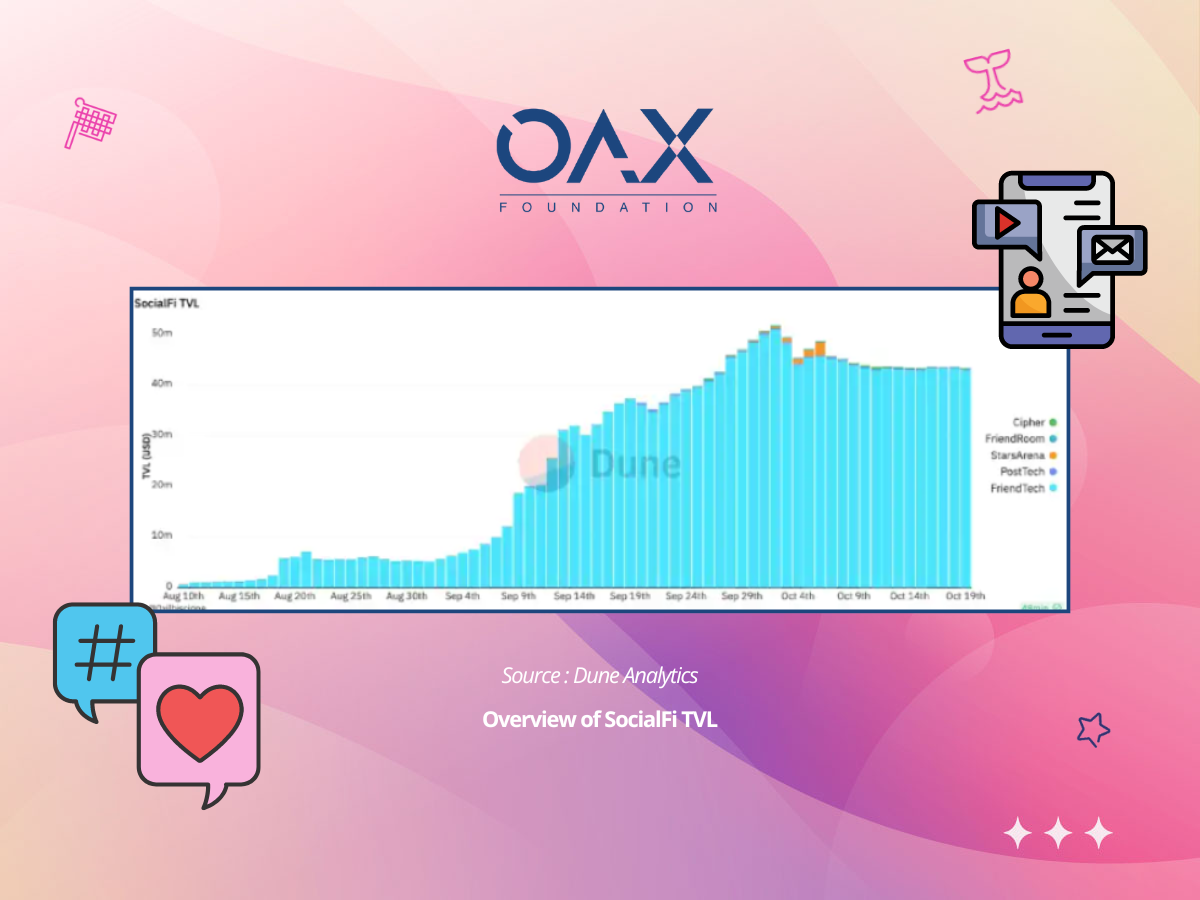
SocialFi back on the spotlight - Part 1
An innovative concept at the intersection of “social media” and “finance” that has taken the Web3 landscape by storm. By enabling content creators to monetize their social capital and influence through smart contracts, SocialFi has reshaped our interaction with on-chain digital platforms. The OAX Foundation has been closely monitoring this emerging space, recognizing its potential in driving new use cases for the industry. Now, with the recent launches of FriendTech V2 and FantasyTop this month, the SocialFi sector is once again in the spotlight. FantasyTop has already achieved multimillion-dollar volume days, while FriendTech’s Clubs feature has generated an impressive $40 million in trading volume. In this two-part series, we invite you on a journey into the world of SocialFi. In this first article, we aim to provide an overview of the sector, setting the stage for a deeper exploration of its possibilities.

What is SocialFi
Platforms like Friend.Tech and FantasyTop introduce tradable components, such as NFTs or tokens, linked to social content creators’ profiles, enabling users to speculate on their future activity or attention on the platform. This innovative approach provides creators with new revenue streams, addressing the limitations of traditional monetization frameworks where many small to medium-sized creators struggle to earn a viable income on traditional social platforms in the likes of Twitter / X and YouTube.

The concept of social tokens or in-app utility tokens plays a crucial role in creating economic incentives for creators and holders. These tokens, which can be created at a user level, allow creators to manage their own economies and derive value proportional to their social clout. This decentralized approach aligns incentives across all stakeholders and is made possible by the DAO (Decentralized Autonomous Organization) model inherent in Web3 applications.
How did it become popular
The popularity of SocialFi surged with the launch of the Base layer 2 chain, which paved the way for platforms like Friend.Tech. The ability to trade “keys” or shares of profiles, along with the promise of future airdrops, created a frenzy of trading on Crypto Twitter. Wrapped tokens representing these “keys” have even been introduced, allowing independent trading outside of the platform. Influencers on Crypto Twitter have become sought-after tokens in the top friend.tech tokens category, further fueling the SocialFi trend.

Some key challenges
Despite the traction we have seen in the highlighted projects, it is important to note SocialFi is still in experimental mode, hence there are plenty of questions on the model and how sustaining it is. While on the technology front, scaling is a critical challenge for SocialFi platforms to realize their full potential. Unlike traditional Web2 social media giants such as Facebook, these platforms lack extensive server infrastructures and databases, hindering their growth and effectiveness. However, promising advancements in infrastructure Layer 2 solutions in the likes of BASE, Blast, and BNB are addressing these scalability concerns. As such, the success of SocialFi platforms still hinges on the robustness of scaling solutions.
In summary
To wrap up, creator tokenization in the SocialFi space represents a significant innovation model that introduces new revenue streams and enables creators to capture substantial value. The financial incentives are evident when comparing earnings on SocialFi platforms like Friend.Tech. These earnings can surpass the threshold that theoretically would enhance the participation of quality content from creators. Such incentives attract attention and, coupled with the social virality aspect, have the potential to generate continual inflows and drive revenue and growth for SocialFi platforms.
The OAX foundation believes should these models solidify it would drive the demand and adoption of infrastructure level at scale which is critical for the industries growth. In the meantime, the foundation has already begun exploring iterations of SocialFi models in our ecosystem projects roadmap such as Notifs app to incentivize contributors and users.
What’s next
Although SocialFi shows potential, its long-term sustainability is yet to be determined. The SocialFi sector aims to tackle significant challenges present in centralized social media platforms, such as user risks, censorship and monetization. These important issues will be further examined and discussed in Part 2 of this series.


